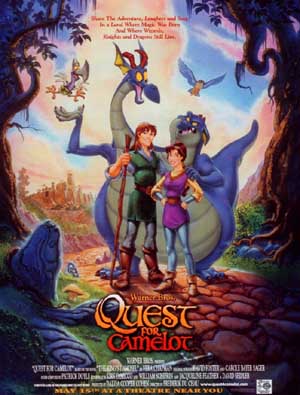Pokemon: The First Movie
Posted on December 13, 2002 at 5:16 am
Human scientists have figured out a way to create a bigger and stronger clone of the most powerful Pokemon ever, Mew. The result is a sort of Maxi-Mew called Mewtwo. Mewtwo decides to go after that goal of all movie bad guys worth their salt, total world domination, by capturing and cloning all the Pokemons.
Mewtwo lures the best Pokemon masters to his island for the ultimate battle. He points out – and here I have to side with him – that the Pokemons are slaves to the humans. Then each of the Pokemons has to fight its clone in a sort of existential crisis. This was very appealing to the little boy in front of me, who chanted happily, “Two Pikachus, two Jigglypuff, two Bublasaur…” like a Pokemon Noah. Then it all ends happily – if hypocritically, with everyone in favor of cooperation instead of fighting. (NOTE: The movie is preceded by a strange short movie about a Pokemon trip to an amusement park.)
Anyone who has ever seen the TV series, played the game, or bought the cards knows what to expect here. Every generation of children has some hideously annoying cartoon series to provide parents with much agonizing and many, many buying opportunities. The characters usually undergo some transformation or make use of a secret to attain power. This theme is endlessly interesting to kids who can feel overwhelmed by a world built on a scale that is often too large for them.
Kids, especially those ages 6-10, also love to memorize and sort endless facts, whether about Pokemons, dinosaurs, cars, or Beanie Babies. It gives them a sense of mastery, especially because they can do so much better than adults. And it becomes an important part of their social development, creating a shared language with their friends. This can be particularly meaningful for kids who are insecure about talking to other children.
Still, excruciating as it can be for parents to endure, it may be worthwhile for kids to see the movie. If it makes it any easier, remember that before too long, this will be over and by the time the next one comes along your children will be past that stage.

